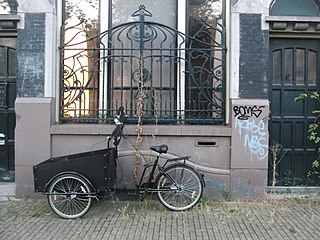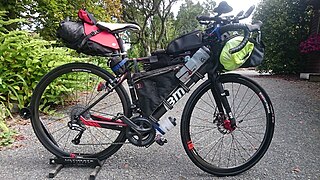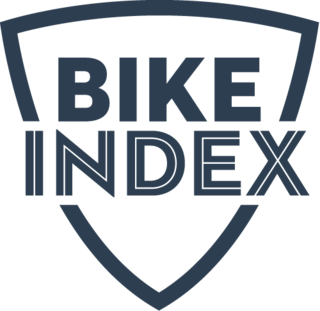
Norwegian is a North Germanic language from the Indo-European language family spoken mainly in Norway, where it is an official language. Along with Swedish and Danish, Norwegian forms a dialect continuum of more or less mutually intelligible local and regional varieties; some Norwegian and Swedish dialects, in particular, are very close. These Scandinavian languages, together with Faroese and Icelandic as well as some extinct languages, constitute the North Germanic languages. Faroese and Icelandic are not mutually intelligible with Norwegian in their spoken form because continental Scandinavian has diverged from them. While the two Germanic languages with the greatest numbers of speakers, English and German, have close similarities with Norwegian, neither is mutually intelligible with it. Norwegian is a descendant of Old Norse, the common language of the Germanic peoples living in Scandinavia during the Viking Age.

"Ja, vi elsker dette landet" is the national anthem of Norway. Originally a patriotic song, it became commonly regarded as the de facto national anthem of Norway in the early 20th century after being used alongside "Sønner av Norge" since the 1860s. It was officially adopted in 2019.
Nynorsk is one of the two official written standards of the Norwegian language, the other being Bokmål. From 12 May 1885, it became the state-sanctioned version of Ivar Aasen's standard Norwegian language (Landsmål), parallel to the Dano-Norwegian written standard known as Riksmål. The name Nynorsk was introduced in 1929. After a series of reforms, it is still the written standard closer to Landsmål, whereas Bokmål is closer to Riksmål and Danish.

Fosen is a traditional district in coastal Trøndelag county, Norway. The district consists of the municipalities Osen, Åfjord, Ørland, Indre Fosen, Orkland, Heim, Hitra, and Frøya.

The Norwegian language conflict is an ongoing controversy in Norwegian culture and politics about the different varieties of written Norwegian. From 1536/1537 until 1814, Danish was the standard written language of Norway due to the union of crowns with Denmark. As a result, the proximity of modern written Norwegian to Danish underpins controversies in anti-imperialistic nationalism, rural versus urban cultures, literary history, diglossia, spelling reform, and orthography.

A bicycle parking rack, usually shortened to bike rack and also called a bicycle stand, is a device to which bicycles can be securely attached for parking purposes. It may be freestanding, or securely attached to the ground or a stationary object, such as a building. Indoor racks are commonly used for private bicycle parking, while outdoor racks are often used in commercial areas. General styles of racks include the Inverted U, Serpentine, Bollard, Grid, and Decorative. The most effective and secure bike racks are those that can secure both wheels and the frame of the bicycle, using a bicycle lock.

A bicycle locker or bike box is a locker or box in which bicycles can be placed and locked, usually 1 or 2 per locker. They are usually provided at places where numerous cyclists need bike parking for extended times, yet where the bikes might otherwise get damaged or stolen.

A cargo tricycle or transport tricycle is a type of cargo bike that has historically been used for the transport of goods, and more recently also for transport of children. It can stand on its own when parked and is stable at low speeds. However, they often have poor stability at high speed as most simple models are not able to lean into the turn to shift the center of gravity. However, there are some cargo tricycles with advanced suspension that allows for some roll which alleviates some of the stability problems at high speed.

Bike registries are databases of unique, identifying information about bicycles and their ownership. Most registration programs use the unique serial numbers which are permanently affixed to most bicycles during manufacture.

A tool library is an example of a library of things. Tool libraries allow patrons to check out or borrow tools, equipment and "how-to" instructional materials, functioning either as a rental shop, with a charge for borrowing the tools, or more commonly free of charge as a form of community sharing. A tool library performs the following main tasks:

The Danish bicycle VIN-system is a system introduced in 1942 by the Danish government, providing all bicycles in Denmark with a unique code. The VIN code is a combination of letters and digits embedded into the bicycle frame and consists of a manufacturer code, a serial number, and construction year code.

Cycling in Denmark is both a common and popular recreational and utilitarian activity. Bicycling infrastructure is a dominant feature of both city and countryside infrastructure with segregated dedicated bicycle paths and lanes in many places and the network of 11 Danish National Cycle Routes extends more than 12,000 kilometres (7,500 mi) nationwide. Often bicycling and bicycle culture in Denmark is compared to the Netherlands as a bicycle-nation.

Cycling infrastructure is all infrastructure cyclists are allowed to use. Bikeways include bike paths, bike lanes, cycle tracks, rail trails and, where permitted, sidewalks. Roads used by motorists are also cycling infrastructure, except where cyclists are barred such as many freeways/motorways. It includes amenities such as bike racks for parking, shelters, service centers and specialized traffic signs and signals. The more cycling infrastructure, the more people get about by bicycle.

Bikepacking is how a bicycle is packed for bicycle touring, and also refers to the adventure sport of long-distance unsupported cycle races. As with backpacking, lightweight packing is a popular topic within bicycle packing. Any kind of bicycle can be used for bikepacking, and specialized touring bicycles often have attachment points from the factory such as low riders and luggage carriers, but most types of bicycles can be equipped with a frame bag, saddle bag, top tube bag and handlebar bag.

The Norwegian identity card, commonly referred to as the national identity card in Norway, is a non-compulsory biometric identity document issued since 30 November 2020. It is one of two official identity documents issued by the Norwegian Police Service, the other being the Norwegian passport. It is only issued to Norwegian citizens, and may indicate citizenship so that it can be used as a travel document facilitating freedom of movement within the European Free Trade Association and the European Economic Area. For travel within the Nordic countries no identity documentation is legally required for Nordic citizens due to the Nordic Passport Union.

Bike Index is a nonprofit online bike registry where anyone can register their bicycle for free. Bike Index is based in Chicago, Illinois. Unlike most other registers, the Bike Index database is openly available with an accessible API so that anyone can use it to find and return stolen bicycles. The registry being open to anyone can help track and recover bicycles in different cities or even countries, which would otherwise be difficult with multiple registries with closed access.

Ulrikke Brandstorp, also known mononymously as Ulrikke, is a Norwegian singer, songwriter, musical actress, voice actress and television presenter.
Kindernay was a brand of hub gears manufactured by the Norwegian start-up company CA Technology Systems. They used hydraulic gear levers and were manufactured in Oslo, Norway. Their system differed from their competitors by having a modular design called Swap Cage where the gear mechanism can be easily separated from the hub housing, so that the end-user can use the hub gear with several different wheel sets. This could make it easier and more economical to change wheel sets to adapt the bike for different seasons or roads, or so that wheels can be easily changed between bikes. The hubs are assembled at Kindernay's factory in Oslo by hand, but in the long term it was planned that production be automated and assembled by robots.
















